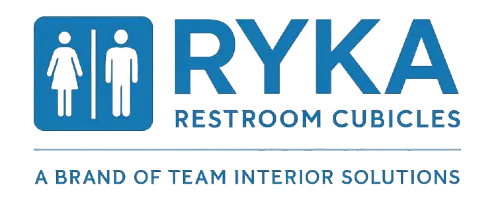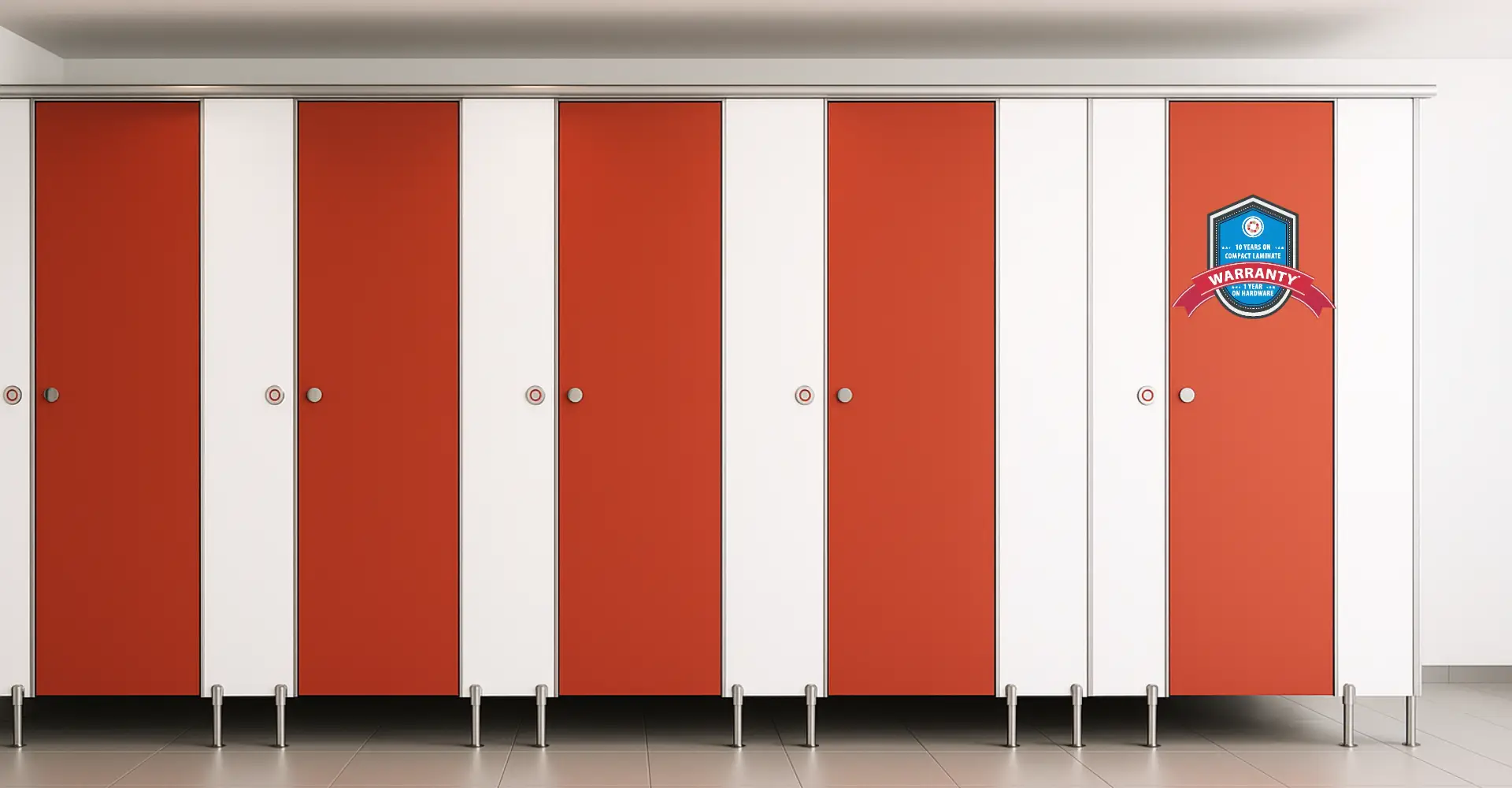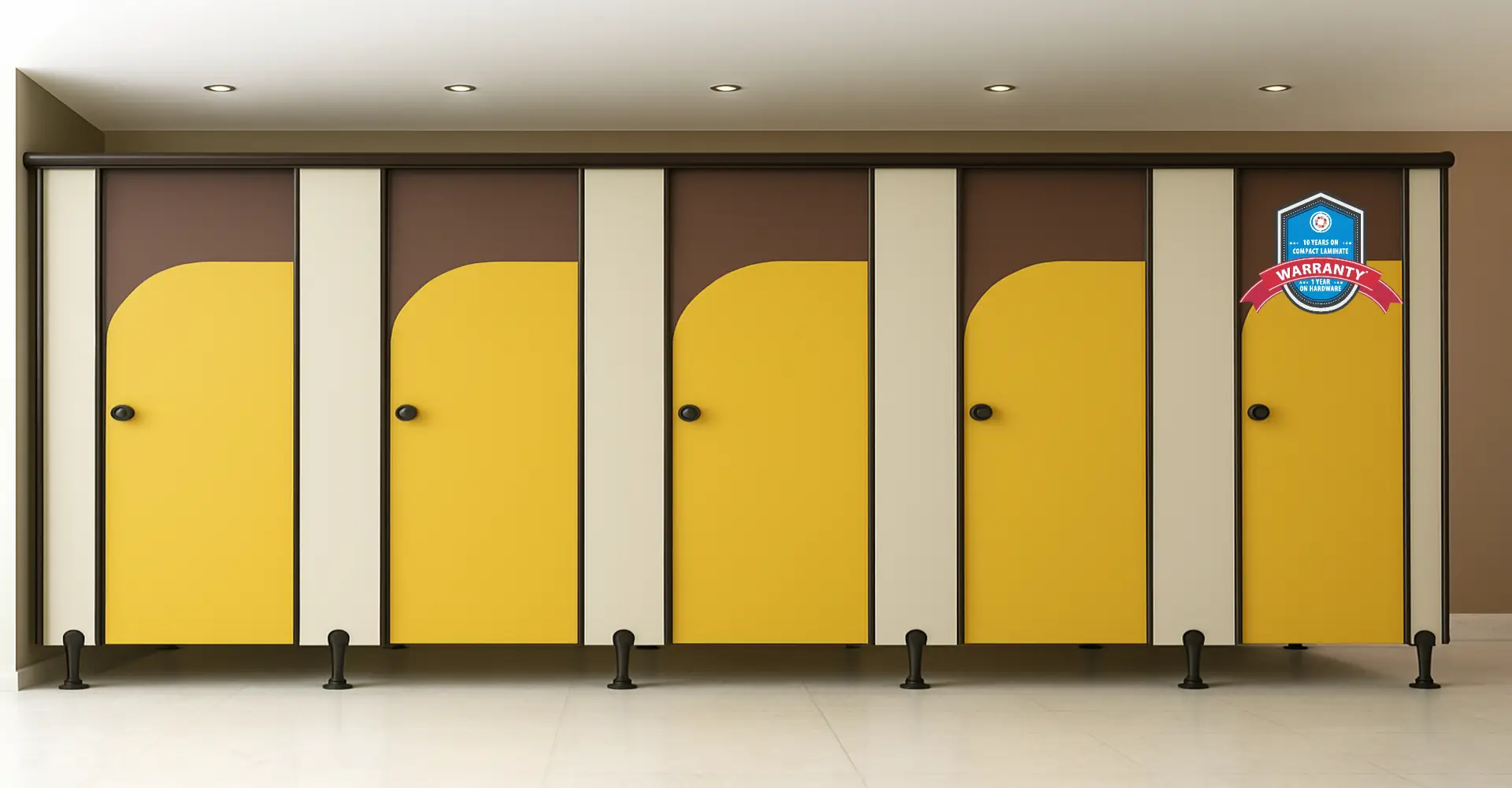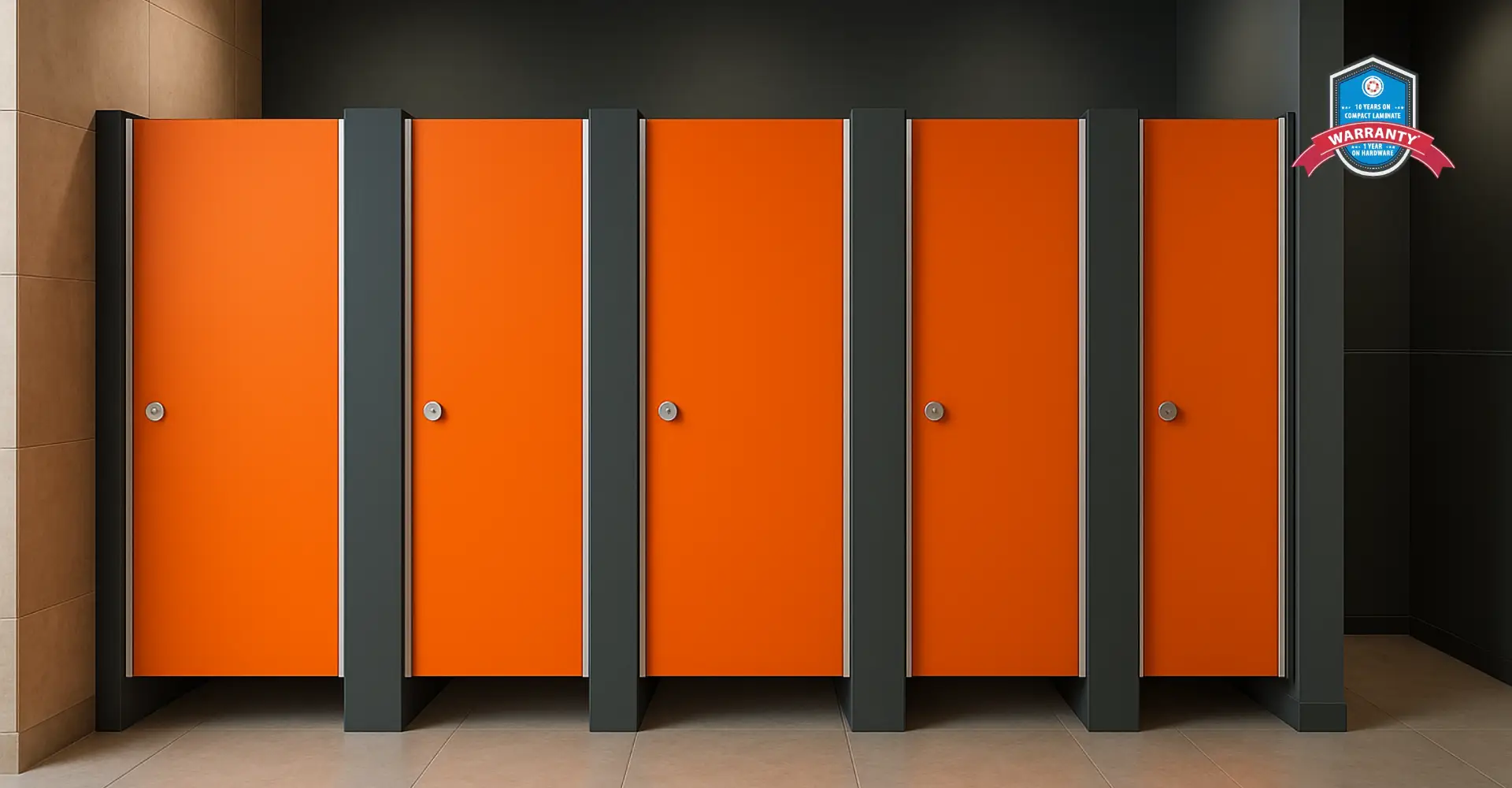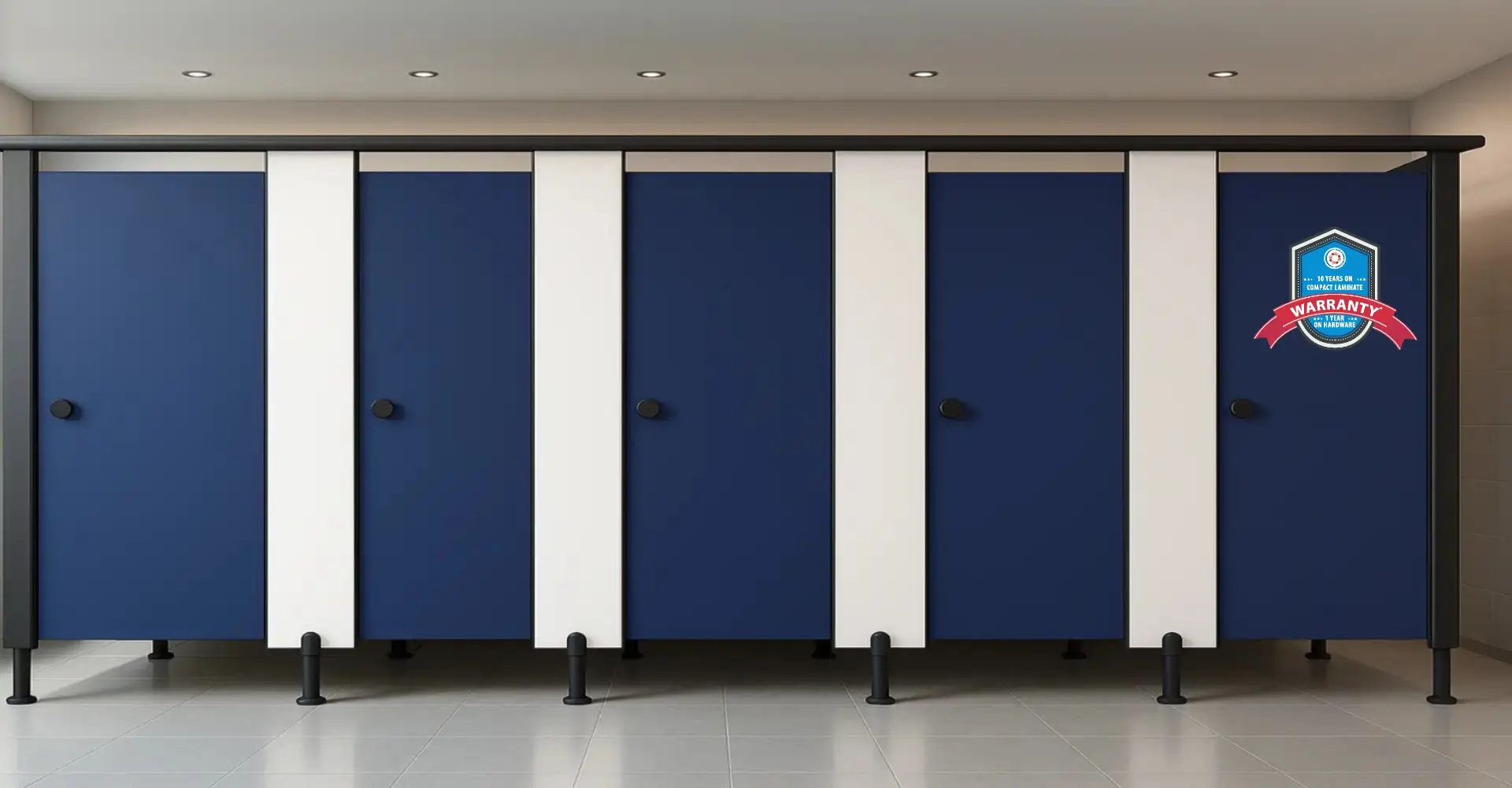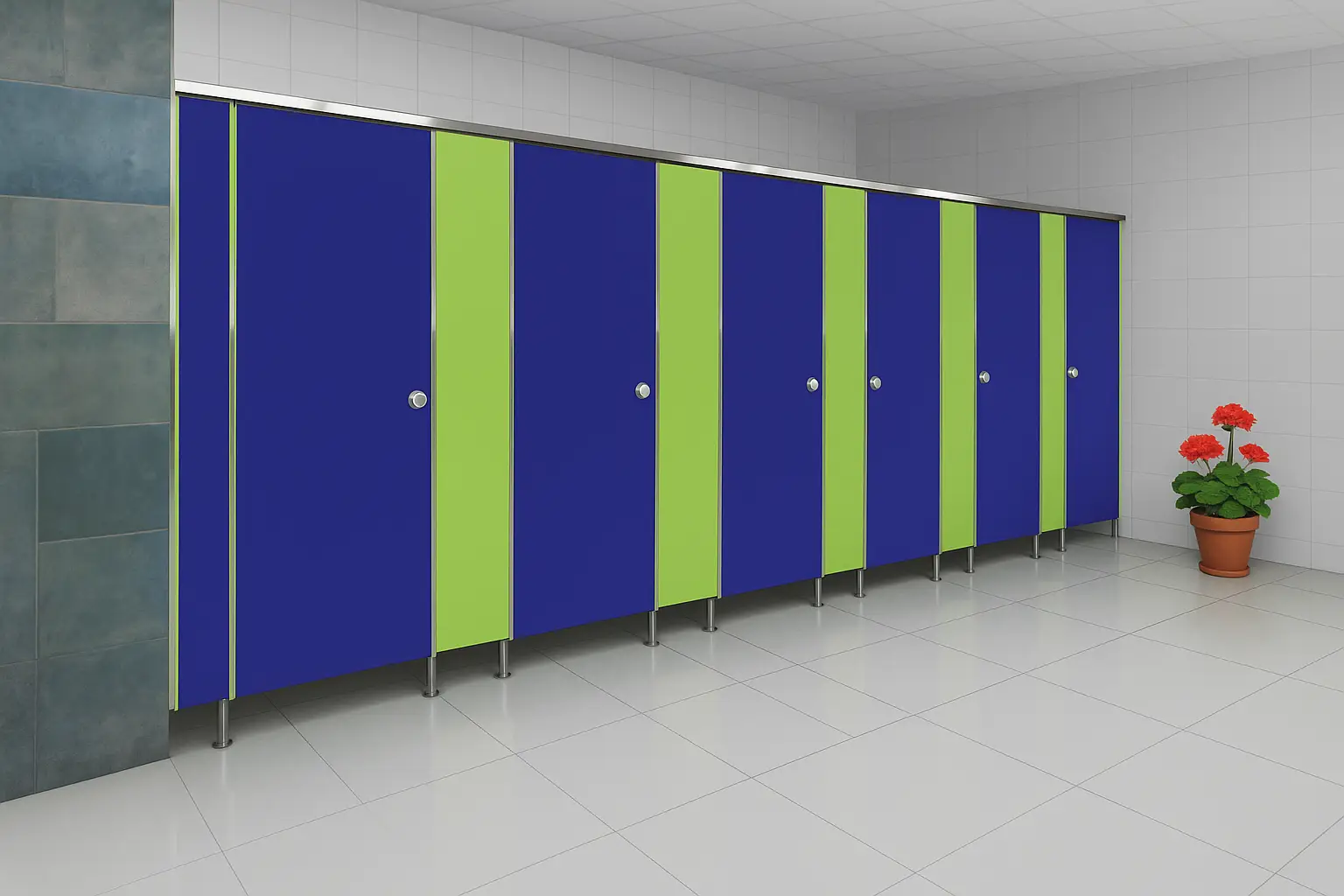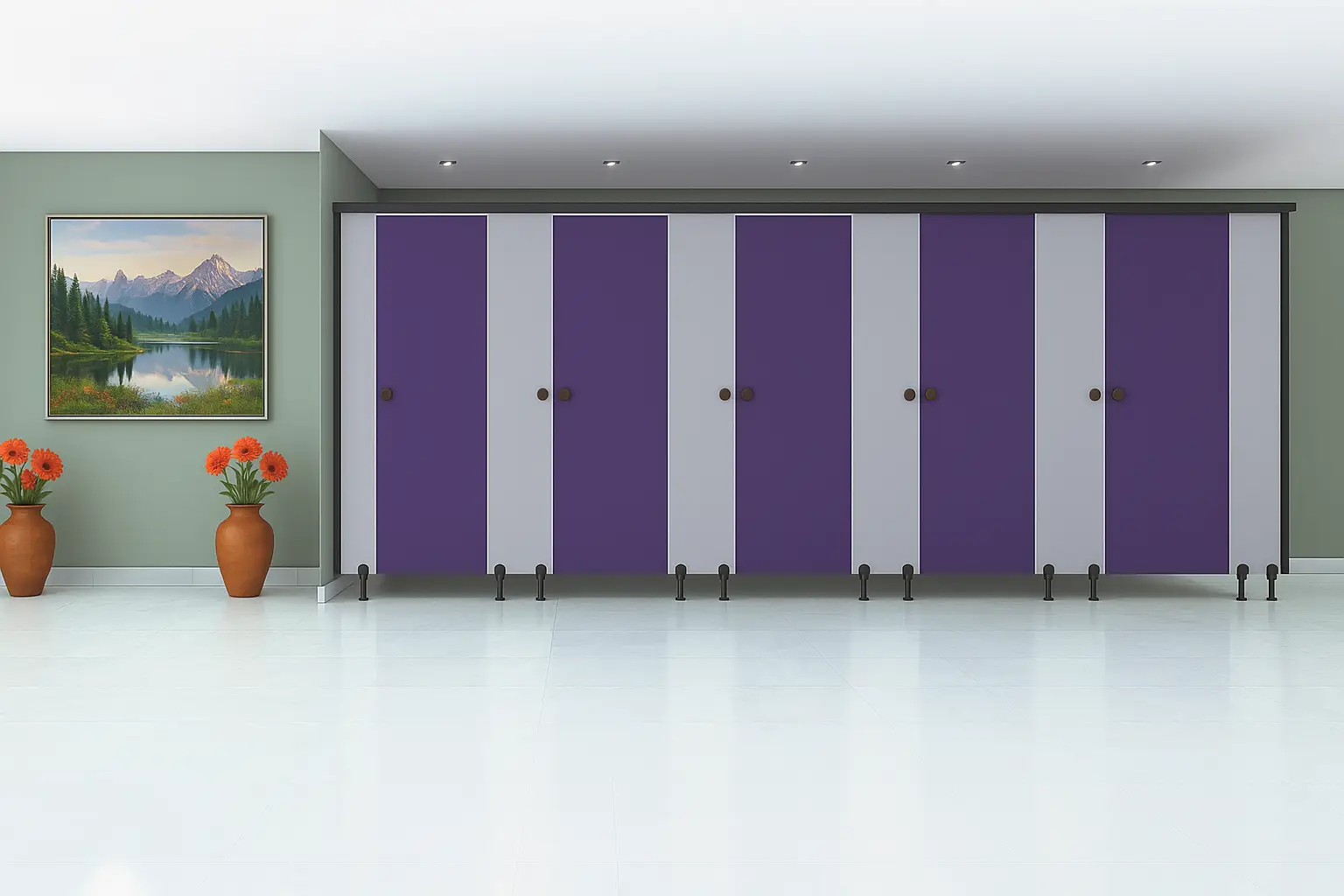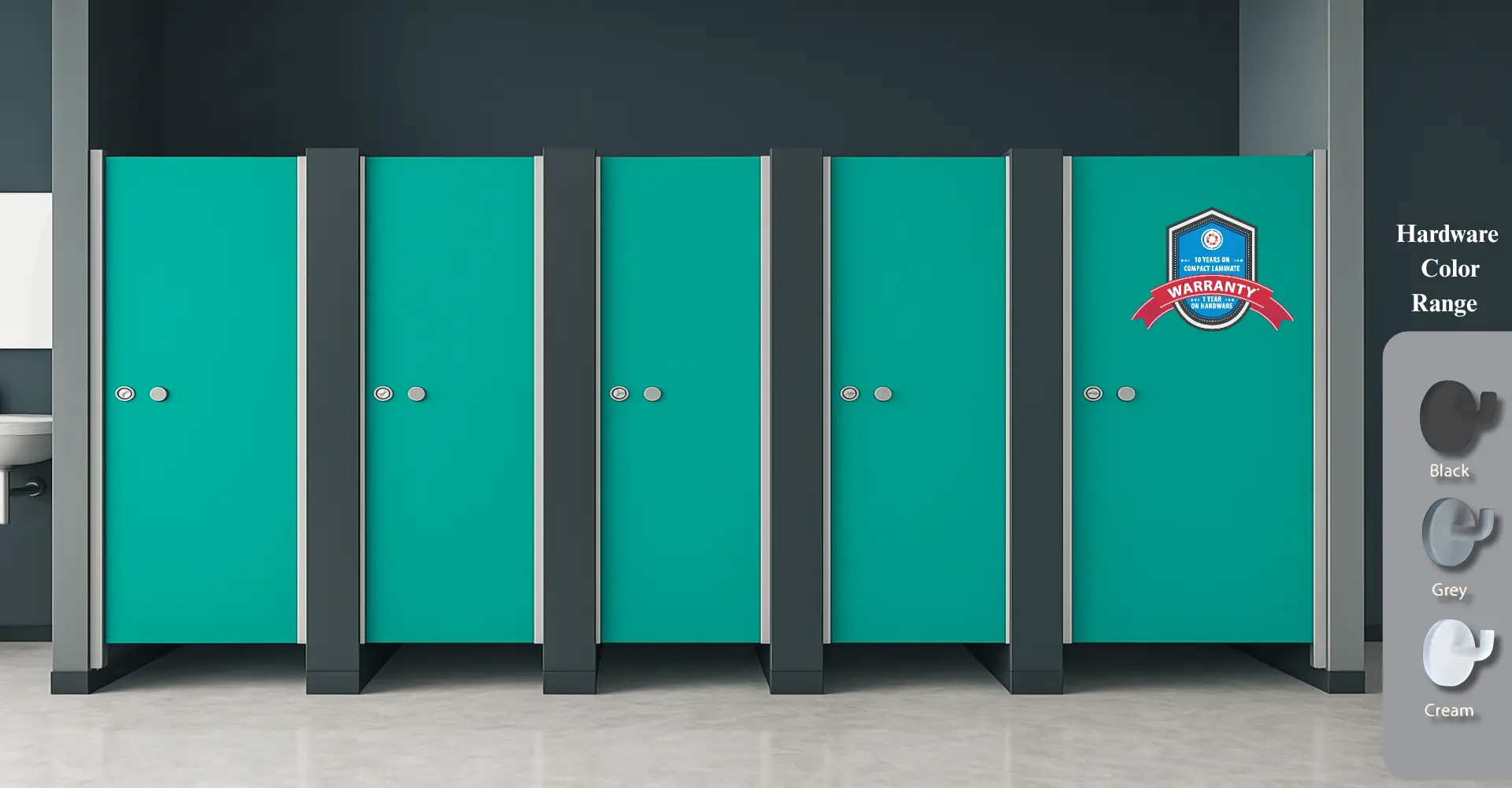Sustainability is no longer an option; it is now the main priority of contemporary building construction and infrastructure. Offices and educational institutions, airports, malls, and hospitals are all becoming more and more focused on eco-friendly restroom solutions. Toilet cubicles are one of such solutions that are essential to ensure environmental responsibility, hygiene, and resource saving.
Ryka Restroom Cubicle, being the manufacturer of the leading toilet cubicle partitions in India, has been a frontrunner in innovative and sustainable restroom solutions. Using sustainable materials, intelligent designs, and environmental awareness, Ryka makes sure that the area in the restrooms not only serves a purpose but also is more responsible towards the environment.
Our article will address the reasons why green cubicles are important, the current trends, their usage in industries, and the future of the eco-friendly restroom design in India.
The reasons why eco-friendly toilet cubes are necessary are discussed
Bathrooms are one of the commonly used areas of any building. Conventional bathroom designs have the potential to add up to water waste and energy usage. Eco-friendly cubicles have been created to address these issues by:
- Conservation of water by way of low-flow and dual-flush toilets
- Reducing energy use through natural lighting, ventilation, and sensors.
- Reducing environmental interference through the utilization of recyclable or renewable materials.
- Improving hygiene through anti-microbial surfaces and simple-to-clean partitions.
As the trend toward sustainability and more stringent green building codes gains more and more acceptance, eco-friendly cubes are becoming a requirement for both new buildings and renovations.
Some of the Trends in Green Toilet Cubicles
1. Recycled and Eco-friendly Materials.
Modern toilet cubicles are increasingly using materials of limited environmental impact, which include:
- High-Pressure Laminates (HPL) are FSC certified for sustainable sourcing.
- Giving plastics and composite panels that are recycled and less dependent on virgin materials.
- Aesthetic appeal using bamboo or engineered wood from a renewable source.
These materials are waterproof, long-lasting, and durable, hence less frequent replacement is required, and this leads to a circular economy.
Industrial Sample: In India, recycled plastic panels are being used by universities and schools in high-traffic areas as cubicles. These panels are robust, they do not need much maintenance, and are completely recyclable after the completion of their lifecycle.
2. Water-Efficient Fixtures
Eco-friendly cubicles are largely driven by water conservation. Trends include:
- Flush toilets that save water consumption, low-flow toilets, and dual flush toilets.
- Faucets and urinals with sensors that turn on when one needs them.
- Recycling systems of greywater were comprised of sink cubicles to recycle water.
Industrial Case: Sensor-controlled cubicles have been installed in offices of metro cities and have been shown to save up to 50 percent of water over conventional systems, saving substantial amounts of money on water bills and helping towards sustainability.
3. Easy-to-clean and Anti-Microbial Surfaces.
Cubicles that are used in high traffic should be hygienic and of low maintenance. Eco-friendly cubicles in the present day include:
- Anti-microbial coating to curb bacteria.
- Stain-resistant and scratch-resistant laminates that do not lose their appearance.
- Enhanced surfaces to clean speedily and reduce the use of chemicals.
Industrial Application: These characteristics are used in hospitals and airports to improve high levels of hygiene, minimize the risk of infections, and minimize cleaning expenses.
4. Modular and Flexible Design
Eco-friendly cubicles are becoming more and more modular, thus permitting:
- Simple installation and subsequent reconfiguring.
- Very little waste of material during renovations.
- Flexibility to accessibility and occupancy modifications.
Industrial Application: Using modular cubicles, corporate offices are able to redesign to meet workforce needs without necessarily changing the whole system, and thus achieve resource and cost savings.
5. Energy-Efficient Features
Although the cubicles are themselves passive, eco-friendly restroom design uses:
- Lighting motion sensors to save on energy.
- Integration of natural ventilation and daylighting
- The exhaust systems to be used to sustain air quality are energy-saving.
These characteristics incorporate the use of restrooms into the green building certification programs, such as LEED or IGBC.
6. Integration of Smart technology.
The most recent development is smart cubicles that are IoT-enabled and monitor:
- Occupancy levels
- Water usage
- Maintenance alerts
This saves on waste, ensures that it is cleaned in time, and aids the facility managers in monitoring resource efficiency.
Industrial Case Study: Airports in India are testing smart cubicle systems, alerting cleaning staff when used beyond limits to keep hygienic and save labor.
The Pros of Eco-Friendly Toilet Cubicles
There are several benefits of using eco-friendly cubicles:
- Less Water, Environmental Impact Reduction: Less energy, material consumption.
- Cost Savings: Reduced water and electricity bills, reduced maintenance expenses.
- Better Hygiene: Surfaces that are anti-microbial and easy to clean decrease the chances of infection.
- Durability: Sustainable materials are of high quality and cannot be worn out, moistened, or hit.
- Green Building Compliance: It helps in certifications such as LEED, IGBC, and GRIHA.
Organizations future-proof their facilities by adopting eco-friendly cubicles an,d with this, embrace environmental responsibility.
Industrial and Commercial
Eco-friendly toilet cubicles are used throughout industries:
- Corporate offices: Employee hygienic restrooms are modern.
- Schools: Long life, low-maintenance, high student traffic cubicles.
- Hospitals: anti-microbial, hygienic surfaces of high importance to the patient.
- Airports and malls: Smart, robust cubicles that could withstand heavy traffic.
- Public spaces: Any building, government buildings, metro stations, and libraries enjoy the advantages of modular and sustainable buildings.
All the sectors are positively impacted with less environmental impact, lower cost, and improved user experience.
Future Outlook
Eco-friendly cubicles are likely to experience tremendous growth in India. The market trends that are likely to influence the market include:
- High-tech, eco-friendly materials such as recycled metals, bio-composites, and laminates made of bamboo.
- Combination with smart building systems of energy and water management.
- In the form of zero-waste design, so that no material is left that cannot be recycled or reused.
- Aesthetics that are customizable but do not affect sustainability.
With the increasing popularity of green building standards and sustainability concerns, eco-friendly cubicles will become the standard instead of the exception in commercial and institutional buildings.
Conclusion
Eco-friendly toilet cubicles would be a good move towards sustainability, hygiene, and cost efficiency. Using recycled and renewable products, waterless faucets, energy-efficient units, and modularity, organizations can develop practical, attractive, and eco-friendly.
As a major toilet cubicle partitions manufacturer, Ryka Restroom Cubicles integrates innovation, durability, and sustainability to provide environmentally friendly toilet cubicle partitions suitable for commercial, institutional, and public settings. As the world grows more conscious of its sustainability and the regulation of this problem increases, eco-friendly cubicles will become the future of the restroom design in India.
